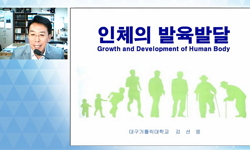The purpose of this study was to describe possible age-related differences in the physical stimulus-psychological response relationship in kinesthetic processing. Specifically, this investigation attempted to quantify the ability and to discover a pos...
http://chineseinput.net/에서 pinyin(병음)방식으로 중국어를 변환할 수 있습니다.
변환된 중국어를 복사하여 사용하시면 됩니다.
- 中文 을 입력하시려면 zhongwen을 입력하시고 space를누르시면됩니다.
- 北京 을 입력하시려면 beijing을 입력하시고 space를 누르시면 됩니다.

노화가 운동감각의 변별력에 미치는 영향 : 과제 목적의 작용 The Influence of Task Goals = Kinesthetic-Discrimination Sensitivity in Young and Elderly Adults
한글로보기부가정보
다국어 초록 (Multilingual Abstract)
The purpose of this study was to describe possible age-related differences in the physical stimulus-psychological response relationship in kinesthetic processing. Specifically, this investigation attempted to quantify the ability and to discover a possible explanation for perceptual continua in psychophysics of kinesthesis which have been described by a prothetic or metathetic continuum. This study consisted of two experiments in which the subjects were required to make distinctions of location and extent movements. Twenty-four right-handed college-aged students and 24 right-handed healthy older adults moved their right arm to three criterion locations and extents on a linear positioning device while blindfolded. Seven standard comparison combinations were presented randomly over 20 blocks equalling a total of 140 trials for location and extent movements, respectively. The method of constant stimuli was utilized to determine the point of subjective equality, just noticeable difference, constant error, and Weber ratio. The results were discussed in terms of the theoretical constructs as well as the effects of aging. The failure to find differences between the age groups suggested that age-related declines cannot be generalized to all perceptual systems and that location and extent movements can best be described by a metathetic continuum.
동일학술지(권/호) 다른 논문
-
- 한국특수체육학회
- 오광진
- 2002
- KCI등재
-
일반 중등학교의 통합체육 시행 현황과 통합체육에 대한 체육교사의 인식
- 한국특수체육학회
- 노형규
- 2002
- KCI등재
-
다운증후군 아동과 청소년의 보행 형태에 대한 운동학적 분석
- 한국특수체육학회
- 한동기
- 2002
- KCI등재
-
Rasch 모형에 의한 정신지체아 운동기능검사의 난이도 추정
- 한국특수체육학회
- 전혜자
- 2002
- KCI등재




 KCI
KCI KISS
KISS





